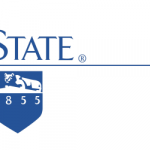Nearest-term application for quantum computers may be chemistry

(IEEESpectrum) The nearest-term application for quantum computers may be chemistry—for example, simulating molecular reactions that might yield insights into next-generation batteries or new drugs. Performing these kinds of simulations becomes exponentially more complex as molecules get larger, which can prove an overwhelming challenge for conventional computing but might be something quantum computers can overcome.
Scientists have performed the largest chemistry simulations that involve quantum computers to date using Google’s Sycamore quantum processor. They employed a new technique that may help resist the noise often seen in quantum circuits.. They employed a new technique that may help resist the noise often seen in quantum circuits.
In the new study, the group of researchers from Google Quantum AI, Columbia University, and the University of California, Berkeley, used a Monte Carlo algorithm, which essentially treats problems as games where solutions are reached via many random simulations of these games. Specifically, they relied on a Monte Carlo algorithm designed for quantum physics models of fermions, a class of particles that includes electrons.
In experiments, scientists employed up to 16 qubits on Google’s 53-qubit quantum computer to calculate the ground state of molecules.
The researchers simulated the molecules H4, molecular nitrogen, and solid diamond. These involved as many as 120 orbitals, the patterns of electron density formed in atoms or molecules by one or more electrons. These are the largest chemistry simulations performed to date with the help of quantum computers.
The prior record for chemical simulations with quantum computing employed 12 qubits and a kind of hybrid algorithm known as a variational quantum eigensolver (VQE). However, VQEs possess a number of limitations compared with this new hybrid approach. The new technique achieved a level of accuracy nearly as good as the best current classical method.
The next step for the researchers is going to larger experiments “where we try to get to the limits imposed by the noise on the current generation of Sycamore,” says study coauthor Joonho Lee, a quantum physicist at Columbia University, in New York City. “As we make progress on developing and understanding new algorithms, we’re also expecting that new advancements in the hardware, and the software that controls it, will keep making our job easier.”



















